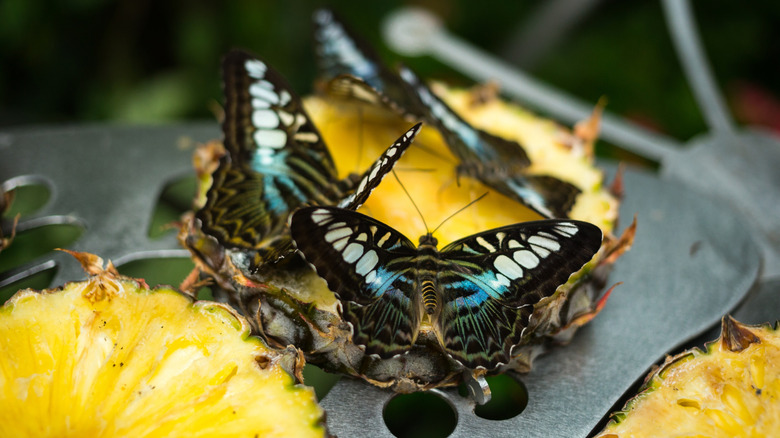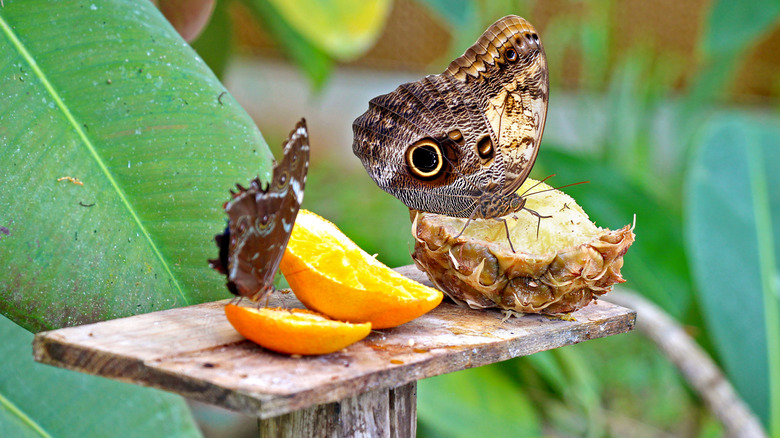An Overripe Pineapple Is The Key To Attracting More Butterflies To Your Yard
When you think of butterflies visiting your yard, you may have visions of monarchs floating in the breeze or swallowtails flitting through your garden. You may not imagine these pollinators clustered on rotting fruit, having their fill. And even if the idea of luring these beautiful bugs with rotting fruit sounds too good to be true, go ahead and add this project to your backyard wildlife to do list. Fans of lepidopterans, as these insects are known along with moths, place overripe pineapples in their yards to attract butterflies. This can also make a great backyard science lesson for kids during the summer months.
Different types of butterflies have different food preferences, and some feed on fruit as part of their regular diet. Whether they are regular fruit feeders or not, these winged insects eat via a long tongue called a proboscis. This mouth part works like a straw, allowing them to siphon up nectar from flowers — or to consume sugars from decomposing fruit. And now you have the chance to witness this butterfly behavior in your own yard. Since nearly all of us are all guilty of having produce go bad in the fridge why not put that overripe pineapple out for the butterflies before moving it along to your compost pile?
How to use overripe fruit to attract butterflies
If you're ready to give this wildlife feeding project a go, know that you don't have to limit yourself to pineapple. Other food options include apples, berries, mangos, melons, oranges, pears, and stone fruit — even an overripe banana might be the key to attracting butterflies to your yard. However, you'll want to use fruit that has gone past its prime, and even rotting fruit is ok to use, as fruit at this stage is even more attractive to lepidopterans.
You can use a plate or a hanging feeder to hold the overripe pineapple or other fruit. Poke slits into the fruit with a knife before putting it out in your yard to make it easier for these flying insects to feed. Find a sunny location for the feeder, preferably with protection from rain and wind, and within viewing range so that you can easily become a backyard wildlife observer. Also keep in mind that if your goal is to start a pollinator garden, there are other steps you can take to attract butterflies to your yard, such as growing plants native to your region, especially larval hosts that feed caterpillars, which, after all, are just butterfly and moth babies.

